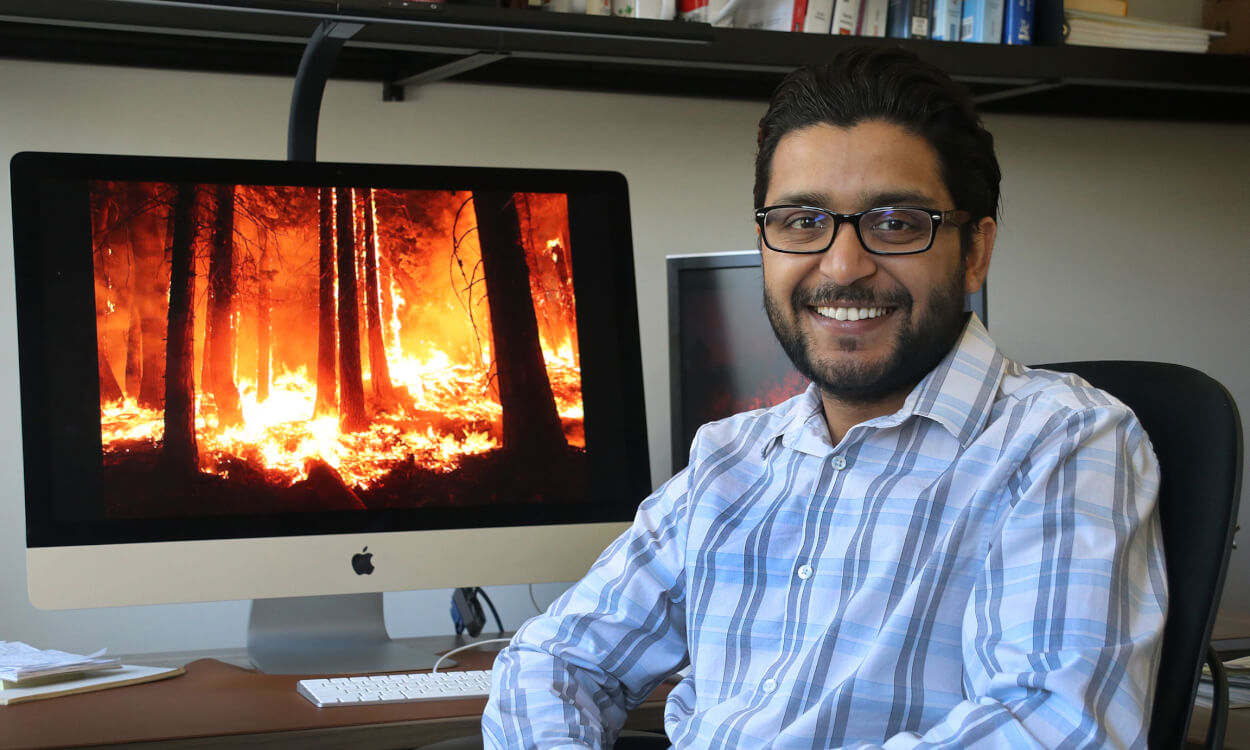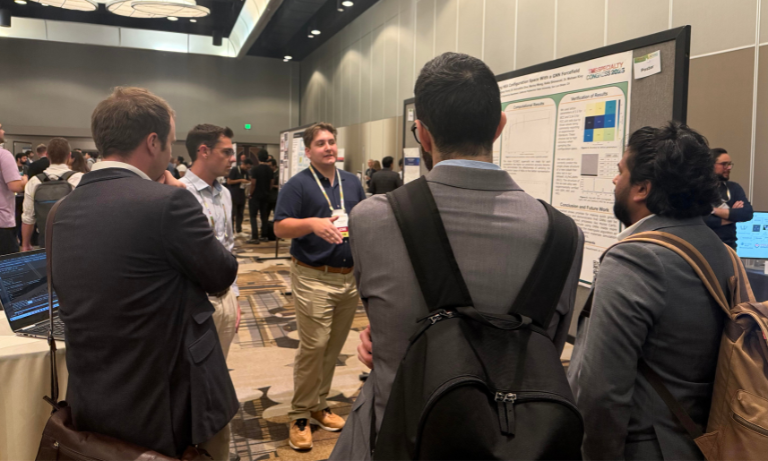The deadliest and most destructive wildfire in California’s history set an industrial engineering professor from Cal Poly on a course of research that could motivate states to minimize the risk of wildfires that are growing ever larger.
Puneet Agarwal started his graduate studies in 2017 with an eye on improving structure fire response using a novel game theory model but changed his focus after the Camp Fire ignited in Northern California, becoming the costliest disaster worldwide in 2018.
“As a doctoral student at the University at Buffalo, my research group and I began brainstorming, asking ourselves, “What can we do for wildfires as industrial engineers?’” he said. “We wanted to help.”
From that day on, Agarwal has studied wildfires in collaboration with his research partners from SUNY Buffalo, publishing a recent article that compares the risk of wildfire across U.S. states and offers insights about how to minimize total costs and losses using prescribed burns.
“If we proactively remove dry fuel in the forest, where vegetation is becoming increasingly drier due to climate change, we can lower the density of the wildfires that will inevitably break out,” he said.
“But some states just aren’t burning enough, including California which faces some of the largest losses in the country due to crippling wildfires.”

Investing in Strategic Burns
Research has proven that prescribed burning – a fuel management technique in which fire is intentionally applied to vegetation – is effective at reducing the risk and magnitude of wildfires that have increased in density over the past decade.
More than 10 million acres burned in the western U.S. during the 2020 wildfire season, destroying over 13,000 buildings and causing 46 fatalities. The estimated cost was pegged at $19 billion.
Researchers also have studied burn patterns, locations and scope but have not compared prescribed fire programs in different states to determine the impact on a larger scale.
Agarwal’s team tried to fill the gap by figuring out the effects of a region’s prescribed burn program and the best scale at which burns should be conducted so agencies can make informed investments when it comes to fuel management.
“We set out to answer the question, ‘How much money do you need to have a successful prescribed burn?’” Agarwal said. “Our model tells them, ‘This is the amount of money you should ask for.’”
The researchers classified the 50 U.S. states into categories based on impact of prescribed fires conducted between 2003 and 2017, then analyzed the 21 states with significant wildfire risks for their paper, “A data-driven analysis and optimization of the impact of prescribed fire programs on wildfire risk in different regions of the USA.”
They found that California and Oregon are the only severe-risk states that have significantly impactful prescribed burn programs and that 19 states, including Colorado, do not seem to have any programs with a notable effect on wildfire risk.
States in the southeast, such as Florida, do not appear to have significant impacts on wildfire risk per acre but administer successful and expansive programs.
“Florida and Georgia don’t use prescribed burns for risk as California and Oregon do. Those states conduct burns like Indigenous people did, to get rid of invasive species and support a healthy forest ecosystem,” said Agarwal, suggesting Florida and Georgia could aid other states with training and resources.
Not only can prescribed burns save lives and structures, but they can also save states substantial amounts of money.
Agarwal’s team found that if Oregon had burned an average of 109,841 acres each year between 2013 and 2017, the state could have saved $355 million. If California had burned 170,000 more acres in 2017, the state could have saved over $5 billion.
“Those states are not burning the optimal number of acres,” Agarwal said. “They need to scale up.”
What’s next?
Agarwal’s research team has another paper under review that looks at public-private partnerships through the lens of game theory to increase prescribed burning.
Private entities own almost 60% of forest land in the U.S. and face significant challenges when planning strategic burns. Barriers include limited resources, funding constraints and legal complexities like liability and cumbersome permit processes.
Public agencies can give incentives and resources to encourage private landowners to conduct more burns, but Agarwal’s team found that investment becomes optimal under certain conditions related to wildfire risk, higher expected losses due to wildfires and lower costs of implementation.
By identifying the ideal partnership framework, both parties can maximize the economic advantages of prescribed burning.
“Ultimately, we can’t stop when wildfires break out, but we can lower the density and reduce the fuel,” he concluded.
By Emily Slater


